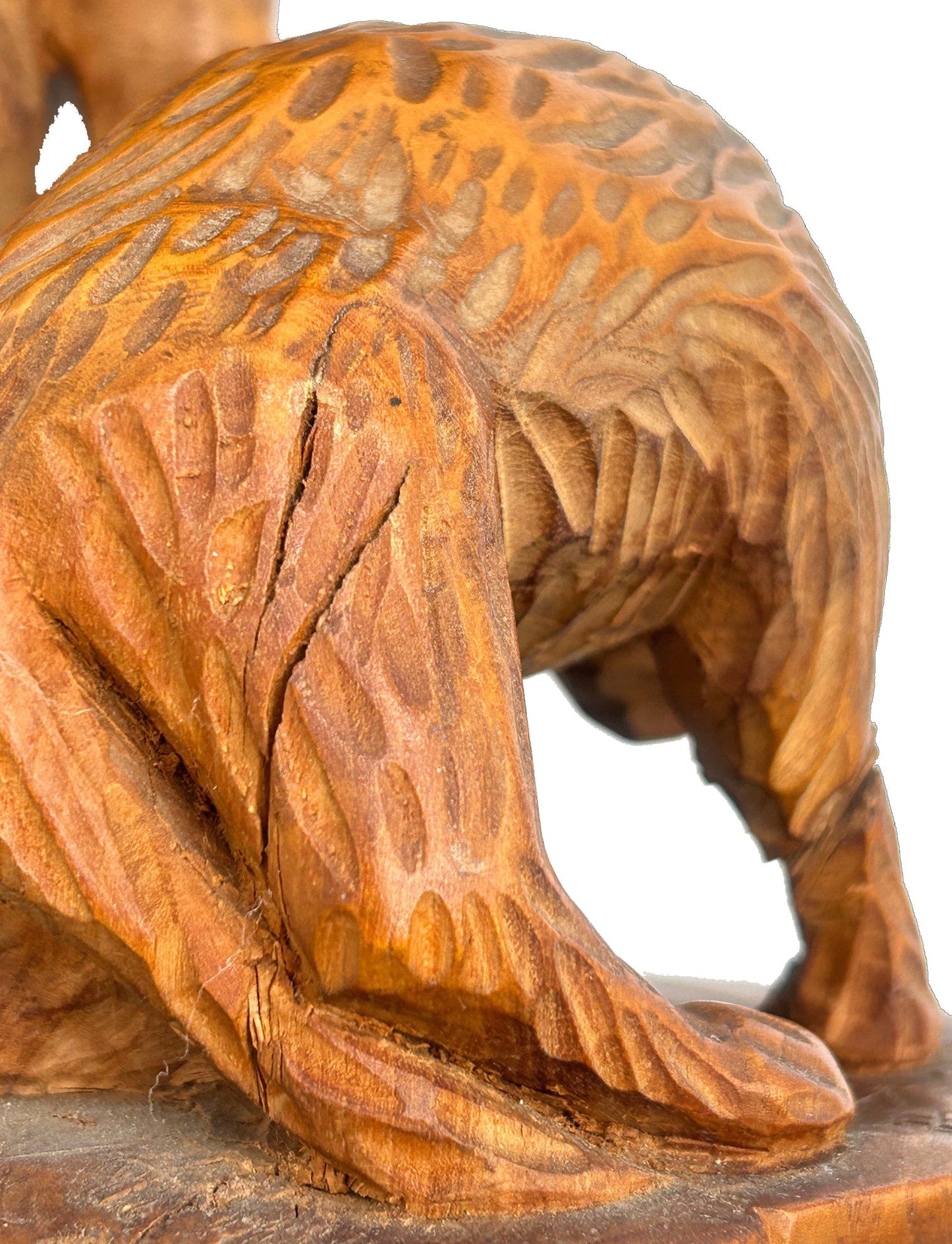White Mtns Estate Services
*IMPORTANT* Rare 1930 Wooden Sculpture "Man's Best Friend" By Enrico Glicenstein
*IMPORTANT* Rare 1930 Wooden Sculpture "Man's Best Friend" By Enrico Glicenstein
Couldn't load pickup availability
Share
Enrico "Henry" Glicenstein was an important sculpture who studied under the like of RODIN.
Sculptor and printmaker Enrico "Henry" Glicenstein was born Henoch Glicenstein in Turek, Poland in 1870. He worked as a sign painter and woodcarver in Łódź, he enrolled at the Royal Bavarian Academy of Art in Munich between 1890 and 1895. He also established a reputation in Paris, winning a silver medal in 1900, and, reportedly exhibited his bronze sculpture, Messiah (now Ben Uri Collection), alongside Rodin's work, at the latter's suggestion, in the central Rotunda of the Grand Palais in Paris. Later the same year, again upon Rodin's recommendation, Glicenstein was elected an honorary member of the Société des Beaux-Arts. Between 1906 and 1914 he exhibited regularly in Germany, and briefly headed the Warsaw School of Fine Arts sculpture department, before returning to Berlin.
Afterwards, the family lived in Switzerland (1918-20), before settling in London in 1921-24 (where he was also known as Henryk or Henry Glicenstein). Among his London pupils was printmaker Sybil Andrews (afterwards, closely associated, from 1925, with the Grosvenor School of Modern Art). Ben Uri's early minutes (in Yiddish) record that a huge event was organized to mark Glicenstein's arrival in England, and that the Society subsequently fundraised to buy several of his works, including Messiah, which was purchased in two instalments, and his sculpture of Israel Zangwill, afterwards displayed in Ben Uri's inaugural exhibition in 1925; works were also loaned to the important Jewish Art and Antiquities exhibition at the Whitechapel Art Gallery in 1927. Glicenstein's work was also exhibited at The International Society of Sculptors, Painters and Gravers Exhibition at the Manchester Art Gallery in 1905, at the Royal Glasgow Institute of the Fine Arts in 1924, and three times at the Royal Academy Summer Exhibition between 1923 and 1925.
He returned to Italy in 1925, held solo exhibitions in Rome and Venice (1925-28) and exhibited at the Venice Biennale (1926) but had to leave the same year, after refusing to join the Fascist Party, and moved permanently to the USA with his son, Emanuel, settling in New York; they were joined by his wife and daughter in 1935. Enrico Glicenstein died in New York, in December 1942, after being struck by a cab. His son, Emanuel Glicenstein became a noted painter (under the name Emanuel Romano) settling in Safed, Israel, where the Glicenstein Museum (now the Israel Bible Museum) was later established. Enrico Glicenstein's works are in international collections, including the Musée d'Art Moderne de la Ville de Paris and the Pompidou Centre in France, the Israel Museum, the Galleria Nazionale d'Arte Moderna in Rome, the Krakow and the Warsaw National Museum, the Brooklyn Museum, the Metropolitan Museum of Art and the United States Holocaust Memorial Museum and Cleveland Public Library. Some of Glicenstein's papers are in the Smithsonian Archive.
https://benuri.org/artists/57-enrico-glicenstein/biography/

















